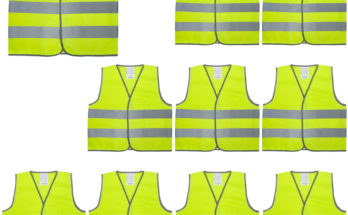This interconnected age has made it so easy for everyone to start their own business without spending a fortune. Clothing is one of those businesses that attract a huge number of wannabe business owners. Let’s face it peeps, we all want to be the next Ralph Lauren but you’re not going to get anywhere shooting in the dark. Hold your horses yet, you need to get educated first. And if you don’t have enough fortune to spend, then we will tell you, how you can start a clothing business even with a limited budget.
Let’s get one thing aside; having less money should not stop you from launching your clothing business. If you’ve been very passionate about fashion, read some fashion magazines, have some cloth industry work experience and follow every new thing that hits the stores, then my friend you have what it takes to start a clothing business. It is very important to feel passionate about what you do. Every business needs creativity, drive, and initial solid business knowledge to start.
We will guide you step by step, how you can start your clothing business.
- Write A Business Plan:
The first thing you should do is to write a business plan. As you’re already short of money, you can write it yourself. This simple yet brief business plan will help you draw an outline for your business. There are some things, your business plan should include:
- Operational Plan: Describe how you are going to run your business from inventory to acquiring a customer. It includes store hours, returns policies, payment options, shopping bags or carts, etc. Defining these things already will keep you going nuts and make you focused.
- Competitive Analysis: Do some research about already present players in your area/niche/industry. Find out what they’re doing. It will be a plus point if you can find a loophole in their services which you can fill.
- Marketing Analysis & Plan: Research your market. There’s number of markets for the clothing industry i.e. Kids, newborns, men, women, and teens, etc. Decide what market you’re gonna target. Let’s assume you decided to target men.
- Management Team: How many people you need to hire or is it just going to be you? Hiring depends upon the operational plan. It defines how many persons it is going to take to run your business successfully.
- Financial Plan: This section describes the finances of your business. This is an outline for where and how much you are going to spend. Like operational expenses, manufacturing expenses, marketing budget, employee’s salaries, etc.
Always go for the easiest and simple way to start your business running as soon as possible. Don’t complicate things. A business plan also consists of developing an identity of your brand like logo, initial branding, website, etc. You can do it yourself if you know some technical stuff but it is recommended to hire an agency or designer to do it for you. You will see the fruits of it in the long run.
- Select Your Location/Develop Online Store:
Selecting your location is a make or break situation for a clothing business. Try to have enough space where you can store your inventory. It should be in your target price market, this is important because your offering price should match the buying power of people living in that area. Otherwise, you’re gonna have a huge problem. That’s why it is important to do marketing analysis and planning first. If you’re going for a physical location, also keep in mind parking space, neighbor shops, your landlord attitude and basic necessities like electricity, etc. If you don’t have a budget to afford a luxurious/posh location then don’t sell high priced fashion clothes right now. Start your way from low price clothes like men’s t-shirts. This you can sell from an extra room of your home but it is better to have some kind of upfront shop.
It is recommended to have an online store with a physical location as well. It will give you more power to drive potential audiences towards your store with the use of online marketing tools i.e. Facebook &Instagram ads, etc.
If you cannot afford a physical location then an online store can be enough for now. Develop an eCommerce store. Everything should be aligned with branding. Use social platforms like Instagram and Facebook ads to target your potential customers.
- Select Your Product:
Your product is very crucial for the quality of your brand and the sustainability of your customer. At the start, focus on one product like blank t-shirts then build your customer base around it. After having some solid customer base, you can offer them some additional products as well i.e. men’s underwear, men’s shorts, men’s jeans, etc.
Also, make sure you can offer your product in different sizes. This will give you a large customer base of the same interests. Having a great product is great for business, you will get more clients returning back and spreading word of mouth about you. Plus, you can focus on running your business more efficiently rather than going out of your way to acquiring new clients. This will be easy on your budget as well because returning customers lowers the cost for acquiring a new customer.
- Find A Wholesale Supplier:
Any business reputation and product pricing largely depend upon the quality of the merchandiser. That’s why it is so important to find a good apparel wholesale supplier who can offer you low prices without compromising the best quality. Get recommendations from others doing business in the same industry or niche. It is best to have suppliers with referrals. For example, if you’re going to sell men’s t-shirts then visit websites such as Opentip.
This is just one example. You can always find your related supplier by doing some research and asking around.
Okay, you’ve defined your business plan, selected a location/developed an online store, decided your product, and found a great wholesale supplier. Now, what’s next? This is just a start, you need to keep up with the trends, do networking, read magazines to keep updated on what’s hot and what’s not. Optimize your operation, marketing techniques, selling techniques, and presentation of your product to keep getting better every day passing. Never ignore your market and competitors. And last but not least, always try to stay ahead.


